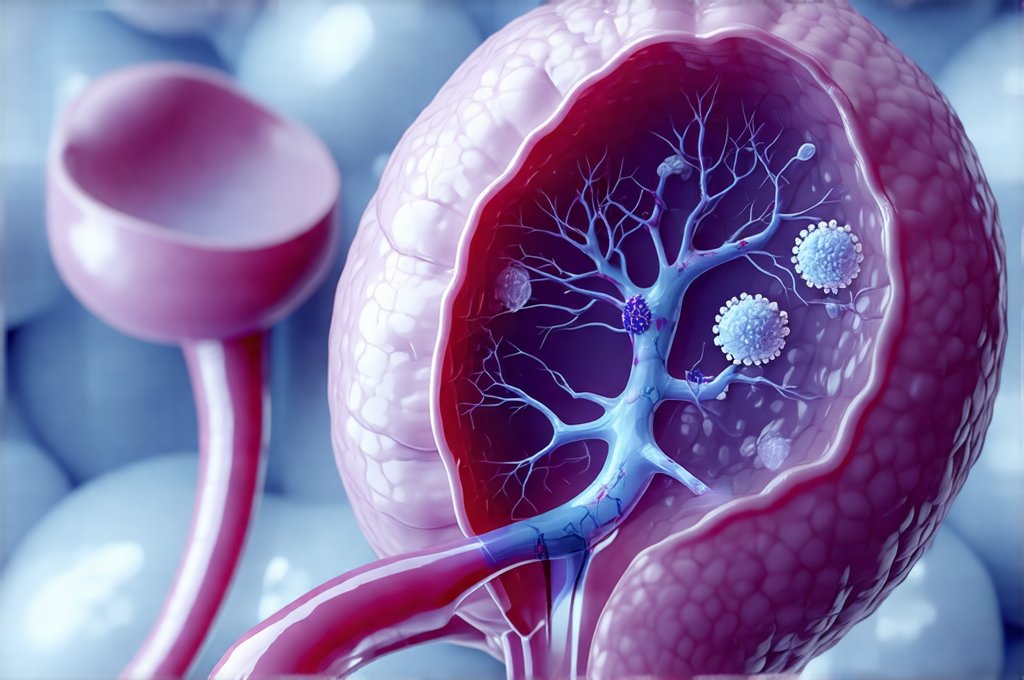The intricate relationship between the immune system and overall health is becoming increasingly understood, revealing connections beyond simply fighting off infections. Autoimmune conditions, where the body mistakenly attacks its own tissues, are often systemic – meaning they can affect multiple organ systems simultaneously. This widespread immune dysregulation doesn’t just target obvious areas like joints or skin; it frequently impacts the urinary tract and bladder, leading to a range of bothersome and sometimes debilitating symptoms. Understanding this connection is crucial for both patients experiencing these issues and healthcare providers seeking accurate diagnoses and effective treatment plans.
Bladder dysfunction isn’t typically the first symptom that comes to mind when thinking about autoimmune diseases, which can lead to delayed recognition and appropriate intervention. Patients may experience increased urinary frequency, urgency, pain during urination (dysuria), or even incontinence, attributing these symptoms to other causes like UTIs or stress. However, in many cases, these are manifestations of the underlying autoimmune process impacting bladder function directly, or as a secondary effect of medications used to manage the primary condition. Recognizing this link allows for a more holistic approach to patient care, addressing not just the individual symptoms but also the root cause.
The Autoimmune-Bladder Connection: How It Develops
The precise mechanisms linking autoimmune diseases and bladder issues are complex and still being researched, but several key factors play a role. Inflammation is central – chronic inflammation inherent in most autoimmune conditions can directly affect the bladder wall, leading to changes in its structure and function. Autoantibodies (the misdirected antibodies characteristic of autoimmunity) may also target components of the bladder or urinary tract, further exacerbating inflammation and causing damage. Furthermore, some medications used to suppress the immune system – while necessary for managing the autoimmune disease – can have side effects that contribute to bladder dysfunction.
Systemic Lupus Erythematosus (SLE), Rheumatoid Arthritis (RA), Sjögren’s syndrome, and Inflammatory Bowel Disease (IBD) are among the most frequently associated with bladder problems. In SLE, for example, autoantibodies can directly attack the bladder lining, causing cystitis (bladder inflammation). Sjögren’s syndrome often leads to a dry bladder due to reduced salivary and lacrimal gland function, but also impacts the bladder’s ability to stretch and contract properly. In IBD, inflammation extending to the pelvic region can affect bladder nerves and muscles. It is important to note that these are not always direct correlations; sometimes it’s simply the chronic stress on the body from managing a systemic autoimmune condition that contributes to increased urinary symptoms.
The impact isn’t just about physical damage either. Chronic pain associated with autoimmune diseases, and even the psychological stress of living with a chronic illness, can significantly contribute to bladder symptoms. This creates a complex interplay between physiological factors and emotional well-being, making diagnosis and treatment more challenging. Finally, it is vital to remember that autoimmune conditions frequently fluctuate in severity – meaning bladder symptoms may wax and wane along with periods of flare-ups and remission of the underlying disease.
Common Bladder Symptoms & Associated Conditions
The specific bladder symptoms experienced by individuals with autoimmune conditions can vary widely depending on the particular condition, its severity, and individual factors. However, some common presentations include: – Frequent urination (frequency) – Urgent need to urinate (urgency) – Pain or burning sensation during urination (dysuria) – Incontinence (leakage of urine) – stress incontinence, urge incontinence, or overflow incontinence – Pelvic pain – Interstitial Cystitis/Bladder Pain Syndrome (IC/BPS)-like symptoms.
Conditions like Rheumatoid Arthritis can lead to bladder dysfunction through inflammation affecting the pelvic floor muscles and nerves, causing urinary urgency and frequency. Sjögren’s syndrome, as mentioned earlier, frequently causes a “dry bladder” sensation, contributing to both frequency and discomfort. Lupus patients may experience cystitis or even kidney involvement (lupus nephritis), leading to changes in urine production and overall bladder function. Patients with Inflammatory Bowel Disease can develop urinary fistulas or strictures due to inflammation extending from the intestines to the urinary tract. The overlap in symptoms between autoimmune-related bladder issues and other conditions like UTIs often leads to misdiagnosis, highlighting the need for a thorough evaluation that considers the patient’s overall medical history. If you are concerned about recurring UTIs, understanding are utis more common in women with IBS may be helpful.
Diagnosing Bladder Issues in Autoimmune Patients
Diagnosing bladder problems in people with autoimmune diseases requires a careful and comprehensive approach. It’s crucial not to automatically assume symptoms are solely due to the autoimmune condition itself, but to rule out other potential causes like UTIs or structural abnormalities. A thorough medical history, including details about the autoimmune disease, current medications, and specific urinary symptoms, is the first step. This should be followed by a physical examination, which may include a pelvic exam for women.
Several diagnostic tests can help pinpoint the cause of bladder dysfunction: – Urinalysis: To rule out infection or other abnormalities in the urine – Urodynamic testing: A series of tests that assess how well the bladder and urethra are storing and releasing urine. This might involve measuring bladder pressure, flow rates, and residual urine volume – Cystoscopy: A procedure where a small camera is inserted into the bladder to visualize the lining and identify any abnormalities. However, this should be done cautiously in autoimmune patients due to potential risks of inflammation or infection – Post-void Residual (PVR) measurement: Determines how much urine remains in the bladder after urination, which can indicate incomplete emptying
It’s essential that healthcare providers are aware of the patient’s autoimmune condition and consider its potential impact on diagnostic test results. For example, immunosuppressant medications may increase the risk of infection, influencing treatment decisions. Collaboration between rheumatologists/immunologists and urologists is often beneficial to ensure a coordinated approach to diagnosis and management. Understanding what are signs of serious bladder issues in women can help guide this process.
Managing Bladder Symptoms: A Multifaceted Approach
Managing bladder symptoms in autoimmune patients requires a multifaceted approach tailored to the individual’s specific condition and needs. The goal isn’t just symptom relief, but also addressing the underlying autoimmune process and minimizing potential medication side effects. Lifestyle modifications are often the first line of defense: – Fluid management: Adjusting fluid intake based on individual tolerance and avoiding bladder irritants like caffeine, alcohol, and spicy foods. – Pelvic floor exercises (Kegels): Strengthening pelvic floor muscles can help improve bladder control and reduce urgency. – Bladder training: Gradually increasing the time between urination intervals to expand bladder capacity.
Pharmacological interventions may be necessary in some cases: – Anticholinergics or beta-3 agonists: These medications can help relax the bladder muscle, reducing urge incontinence and frequency – Pain management: Addressing chronic pelvic pain with appropriate analgesics (pain relievers) or nerve modulation techniques – Immunomodulatory therapies: Optimizing treatment for the underlying autoimmune disease to reduce inflammation and prevent further bladder damage. This requires close collaboration with a rheumatologist or immunologist
Finally, it’s crucial to address the psychological impact of chronic bladder symptoms. Counseling or support groups can help patients cope with stress, anxiety, and depression, which can significantly exacerbate urinary issues. A holistic approach that combines medical interventions, lifestyle modifications, and emotional support is key to improving quality of life for individuals experiencing bladder dysfunction related to autoimmune conditions. For those with autoimmune issues concerned about UTIs, preventing utis in women with autoimmune issues may be a helpful resource. Additionally, if you are looking for more information on kidney health, exploring are kidney stones more common in people with IBS can offer valuable insights.





















